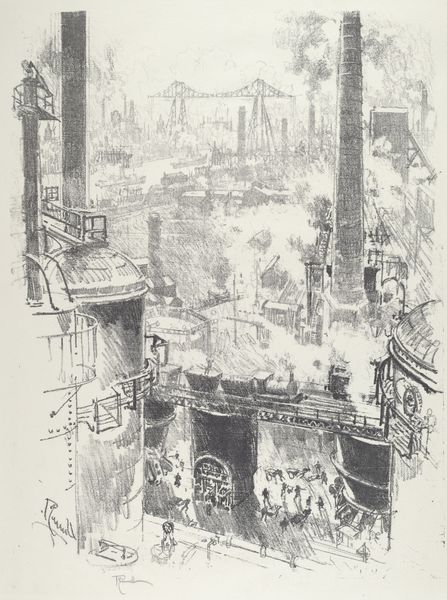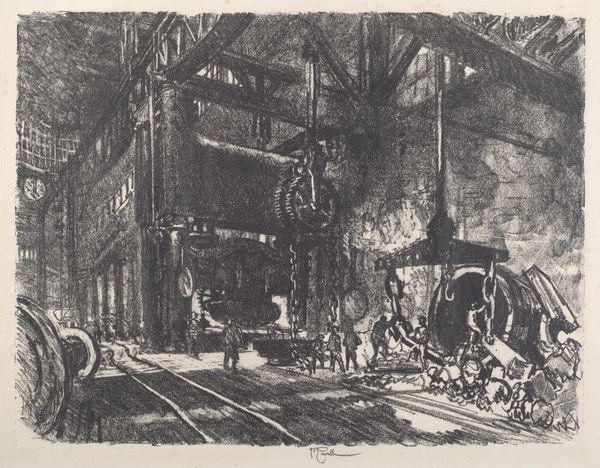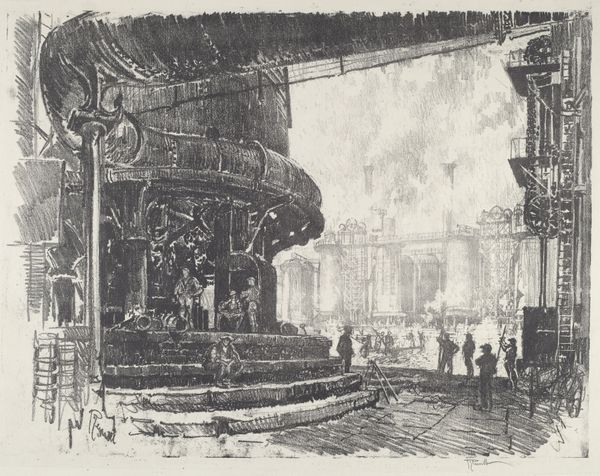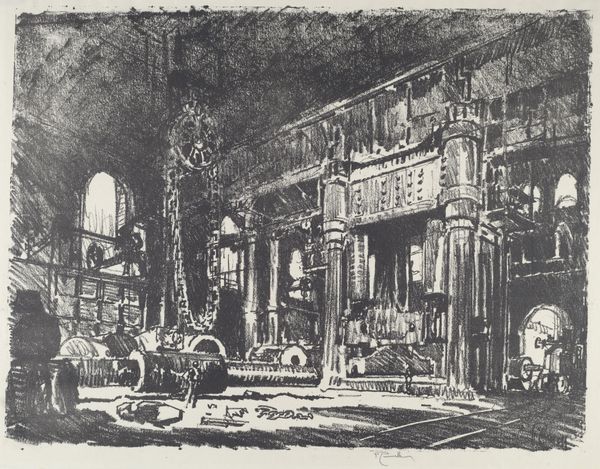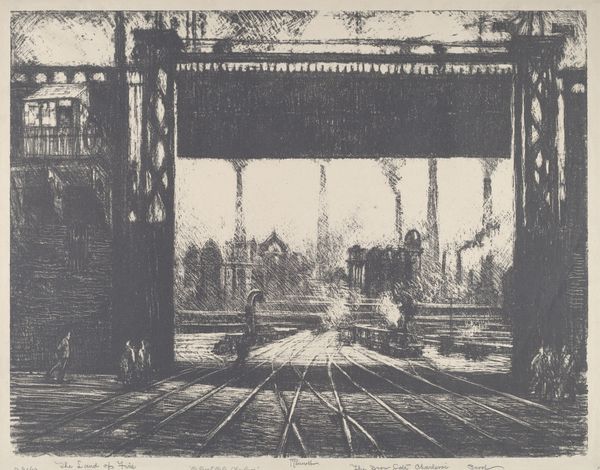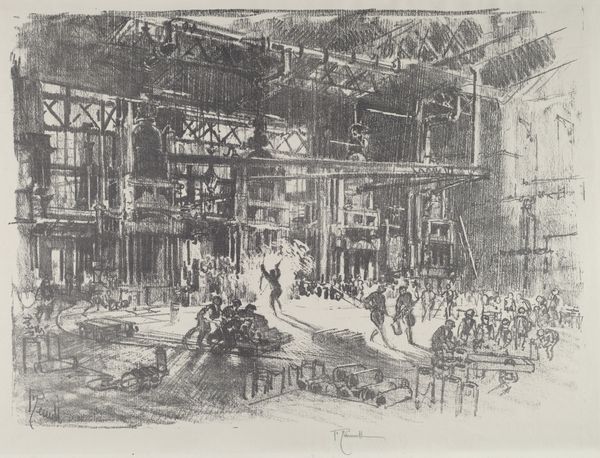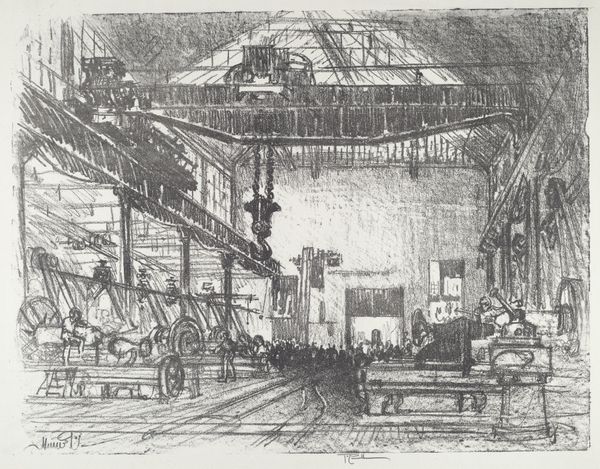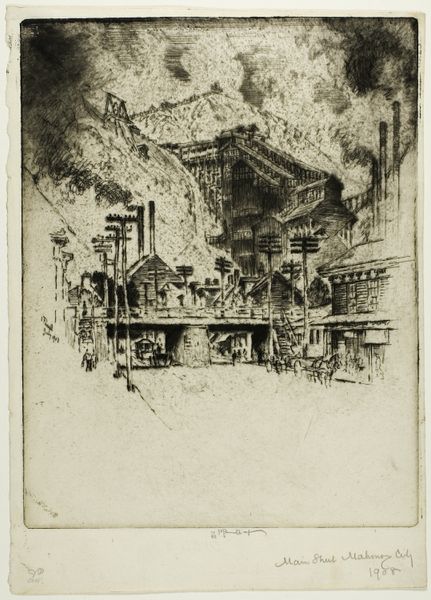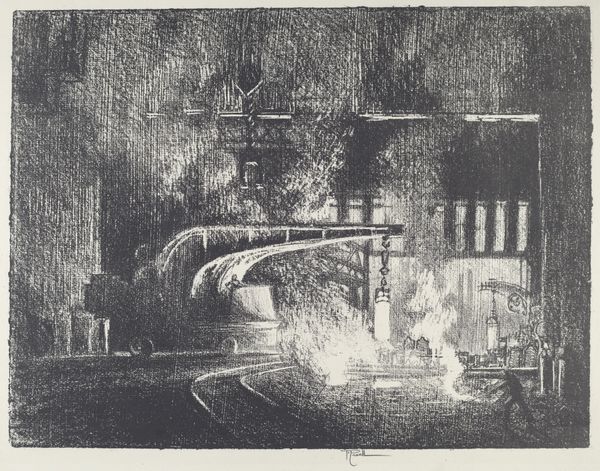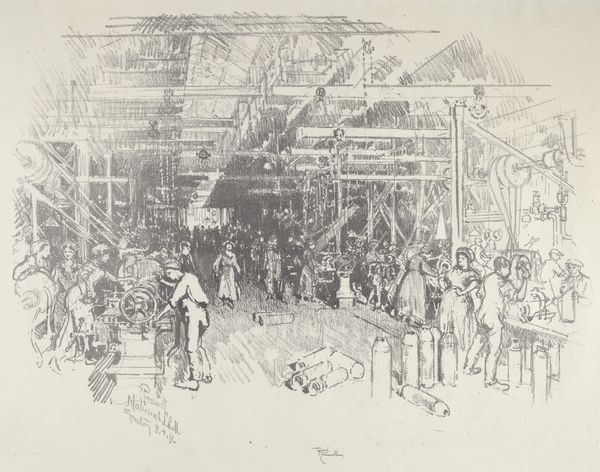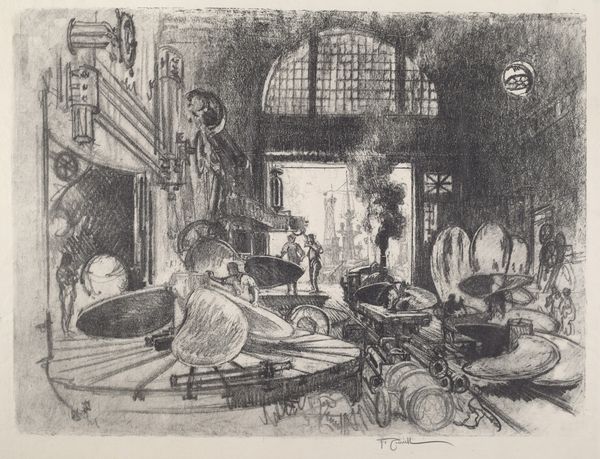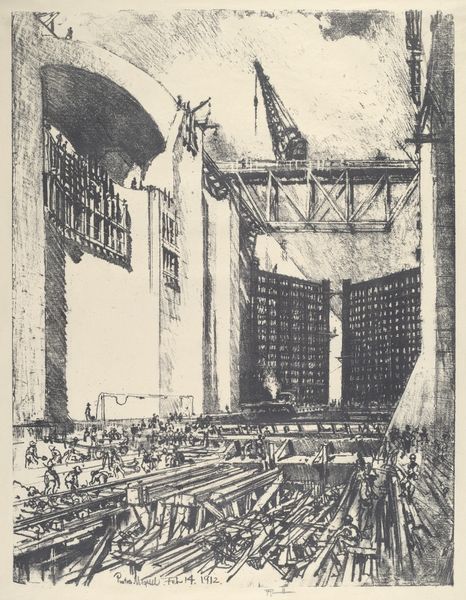
print, etching, graphite
# print
#
etching
#
graphite
#
cityscape
#
modernism
Copyright: National Gallery of Art: CC0 1.0
Editor: Here we have Joseph Pennell’s "The Big Gate of the Big Shop," created in 1916 using graphite and etching. It's fascinating how he captured the scale of industry. What grabs my attention is the way he depicts the workers as almost dwarfed by the machinery. What do you see in this piece? Curator: The materiality speaks volumes. Look at the etching lines: dense and layered to create a sense of oppressive scale. Consider what Pennell is foregrounding. It isn't the triumph of industry but rather the labor involved, the "means of production" if you will. How does he use the print medium itself to comment on this industrialized labor? Editor: I see what you mean. The printmaking process, inherently repetitive, echoes the repetitive nature of factory work itself. So the medium reinforces the message about labor. Is the artistic choice of etching significant here in some other way? Curator: Absolutely. Etching, a process involving acid and metal, mimics the harshness of the industrial environment. The graphite likely served as preliminary sketches, studies of form reduced to their bare essentials, echoing the utilitarian aspect of the factory itself. He isn't celebrating aesthetic beauty but emphasizing function and production. How might we read the cityscape, not just as a depiction of place, but a portrait of labor and material processes? Editor: I never considered it that way, thinking of the cityscape as the portrait. Focusing on the materials makes me rethink the artist’s intentions. I was initially focused on the visual contrast between man and machine, but I see now that Pennell really zeroes in on how it was all *made*, and the implications. Curator: Precisely. It invites us to analyze the conditions of production embedded in the image itself, disrupting the traditional separation of "high art" and the everyday world of manufacturing and work. Editor: So, considering it's more than just a picture – it's a statement about industry and its impact on the lives of laborers and artistic categories too, really changes my view of the work! Thanks for pointing out that shift of perspective. Curator: And considering the artistic statement within that production context expands my own perception. Thanks for highlighting Pennell’s focus on people at work.
Comments
No comments
Be the first to comment and join the conversation on the ultimate creative platform.
